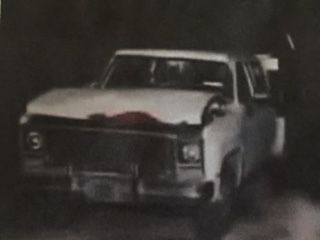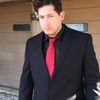The Outlaws Motorcycle Club was originally a non-one-percent group that formed in 1935 at a bar just outside Chicago. In the early 1950s, the Outlaws more or less disbanded when many of its members became police officers. The current group re-formed in the mid-1950s in Chicago proper. In 1963, the Chicago Outlaws became the first recognized “one-percent” motorcycle club east of the Mississippi River. A year later, during a race in Springfield, Illinois, the Milwaukee and Louisville Gypsy Outlaws merged with the Chicago Club and became the Outlaws Nation.
Although the politics of outlaw bikers is primarily local, three of the big-four clubs- the Hells Angels, the Outlaws, and the Bandidos- are international organizations. Smaller one-percent clubs, such as the Mongols, Warlocks, Vagos, and Sons of Silence, are also engaged in organized crime on a global scale. As of 2010, seven American-based one-percent clubs had a total of 484 chapters outside of the United States. While the Italian crime families of La Cosa Nostra (LCN), the Russian Mafiya and the El Salvadorian-based Mara Salvatrucha (MS-13) are foreign imports, one-percent bikers are America’s sole organized crime export. For example, the Outlaws Motorcycle Club (OMC) has chapters in Canada, Russia, Australia, Japan, Thailand, the Philippines, and throughout Europe.
You Gotta Be Dirty: The Outlaws Motorcycle Club In and Around Wisconsin by Michael Grogan takes a look at the Outlaws Motorcycle Club. I sat down with the author to find out why he wrote the book, what surprised him about the motorcycle club, and where his research took him.

Why did you write a book on the Outlaws MC in and around Wisconsin? As a graduate student, I began researching the social turbulence of the 1960s in blue collar Milwaukee. I reached out to a retired detective from that period, who was kind enough to grant an interview. Afterwards, he suggested that I examine the Outlaws Motorcycle Club, a group that not a single historian in the Midwest had researched.
What did you find out in your research for the book that surprised you? What surprised me was the level of violence. Unlike La Cosa Nostra, outlaw bikers – the “one-percent” of motorcyclists who live outside the law – care very little about collateral damage. One incident that was particularly troubling was the death of an infant. Due to prior incidents of theft and vandalism, the owner of a South Milwaukee tavern refused to serve the Outlaws and asked that members of the club leave the premise. After closing, the tavern door was doused with gasoline and set ablaze. A woman and her infant resided in a flat above the tavern and perished in the fire.
Another incident was the placement of a bomb on the roof top of a rival biker’s car. When an unsuspecting paperboy picked up the bundle, which was wrapped like a Christmas gift, the object exploded and killed the 15-year-old boy. Yet, instead of feeling regret, some members of the Outlaws blamed the paperboy for picking up the package.
How did you conduct your research for the book? Who did you talk to? I spent almost two years conducting the necessary research. First, for my graduate school thesis and, then, for the expanded book. I was fortunate to have access to University of Wisconsin System Library databases. After locating news reports and important court cases, I filed almost two dozen open records requests to gain access to primary source documents.
Speaking to and emailing current and former outlaw biker investigators helped fill-in some of the gaps. Charles Berard, a 39-year-veteran of the Milwaukee Police Department, was very helpful. Lt. Berard is a walking encyclopedia of the Outlaws in Wisconsin. Retired Detective Roger Hinterthuer, who authored a book on his dogged pursuit of the paperboy’s killer, was a valuable primary source. So was retired Homicide Lieutenant Steve Spingola, now an investigator for TNT’s Cold Justice. Spingola grew up in the same neighborhood and attended many of the same schools as the deceased paperboy.
Between the primary source documents, newspaper articles and input from the aforementioned investigators, the book developed into a comprehensive history of the Outlaws.

Who are some of the most infamous Wisconsin Outlaw MC members? John W. Bushman is, by far, the most notorious current or former member of the Outlaws in Wisconsin. Hinterthuer has linked Bushman to the murders of at least six people, including the paperboy. Another is Alan “The Watchmaker” Venus, one of the Outlaws’ bomb makers. Court documents state that Venus designed the car bomb that exploded outside the Hell’s Henchmen’s Chicago clubhouse in 1994.
Many experts believed that this car bomb was the third largest in U.S. History (surpassed only by the 1993 World Trade Center blast and Timothy McVeigh’s attack in Oklahoma City). Kevin “Spike” O’Neill was the very dangerous leader of the Outlaws’ Wisconsin Stateline chapter. O’Neill orchestrated the assassination of Lamont “Monte” Matthias in Rockford, which I chronicled in the book, and waged a guerrilla-style war against the Hell’s Henchmen and Hell’s Angels in Illinois and Minnesota.
What were the eleven slayings the Outlaw MC in Wisconsin were linked to all about? The stabbing death of Outlaws’ Prospect John A. Werner, 19, in Sheboygan. Warner was on the outs with the club. The murder of Victoria Horneck, who was shot-and-killed and then buried on farm, by her husband, Outlaws member Garry Horneck. It was believed that Victoria may become a state’s witness. The November 5 bombing death of paperboy Larry Anstett.
The murder of Clifford Machan, who was a co-conspirator in the Anstett bombing. Machan owned the arm where the bomb was first assembled. The disappearances of Outlaws’ associate Joe Stoll and his 20-year-old girlfriend, LuAnn Irby, both believed to be conspirators in the Anstett bombing and stayed at the Machan farm. The deaths of the mother and infant above the Branding Iron tavern after an arson.
The stabbing death of African-American Vaughn Cox in West Allis at the hands of a member of the Outlaws. The homicides of Outlaws’ member Michael Drobac, his wife, Sandy, and the couple’s son, 10-year-old Brock, all of who were shot-and-killed at their family home in Jackson, WI. Drobac was awaiting sentencing for a federal drug charge. Investigators suspect that the Outlaws believed Drobac would turn informant to avoid a lengthy sentence.
Talk about the Hells Angels/Outlaw battles in Wisconsin? In the late 1980s, rumors swirled that the Hells Angels Motorcycle Club was planning to absorb the Hell’s Henchmen MC, a group with chapters in Chicago, Rockford, and South Bend, Indiana. Chicago is the home of the Outlaws’ mother chapter and the group was willing to go to war to defend their turf. Consequently, the Outlaws waged a war of violence and intimidation to deter the Hell’s Henchmen from patching over to the Hells Angels.
The Minnesota chapter of the Hells Angels was sponsoring the Hell’s Henchmen. As a result, the Outlaws targeted Pat Matter, the president of the Minnesota chapter, by bombing his truck. The Outlaws also placed three improvised explosive devices in Rockford- one outside the Hell’s Henchmen clubhouse and others under vehicles owned by the Henchmen. In Wisconsin, the war between the two clubs was exacerbated by the beating of two Hells Angels at Slick’s bar in Janesville, Wisconsin. The Outlaws took the Hells Angels’ colors and the beating made the mid-90s of the most violent years in outlaw biker history.
Why do you think biker culture appeals to so many people? Most Americans work time-consuming, difficult and sometimes tedious nine-to-five jobs. As a result, most people live vicariously through those who live on the edge. While the treachery, beatings, bombings and shootings that involve outlaw bikes are certainly interesting , most Americans could never fathom spending a few weeks in jail less life in prison. In essence, subcultures, such as Outlaw bikers, reinforce the perception of law and order.

